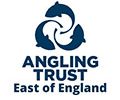Water Management its needs and balances become a reality
Water Management its needs and balances have finally become a reality As far back as 2016 I’ve been highlighting the need for checks and balances in water resources across Cambridgeshire. You would have thought that the water companies would have reflected on this in the latest Water Resource management plans for 2025-2030.…











